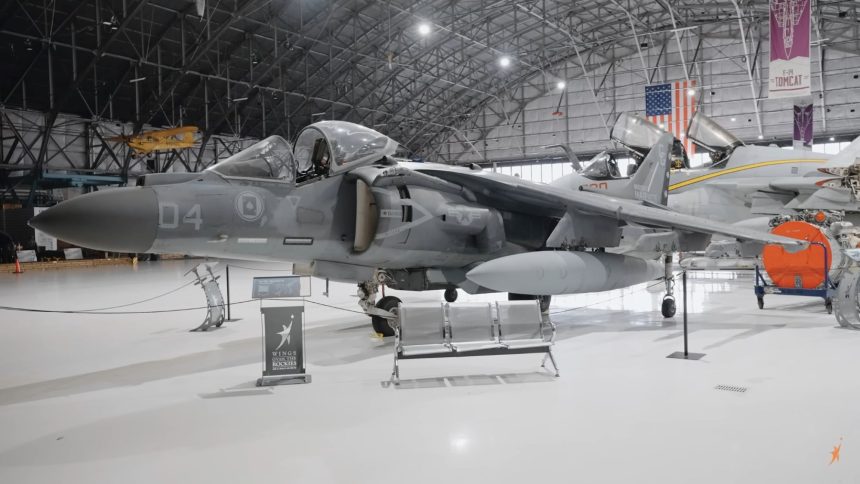The Wings Over the Rockies Air and Space Museum showed in a video of a U.S. Marine Corps AV-8B+ Harrier II was demilitarized and moved to its new home.
The Wings Over the Rockies Air and Space Museum in Colorado received a U.S. Marine Corps AV-8B+ Harrier II STOVL (Short Take-Off Vertical Landing) aircraft earlier this month, and the institution released a short documentary feature about the aircraft’s demilitarization process. The Harrier was flown by Marine Corps pilot Capt. Ryan Gettinger from MCAS (Marine Corps Air Station) Cherry Point, North Carolina, to Buckley Space Force Base, in Aurora, Colorado.
At Buckley SFB, the aircraft was “demiled,” its wings removed and then put with the airframe on two flatbed trucks for the nine mile journey to the museum, where the wings were put back together again. The museum’s curator Stewart Bailey spoke to Gettinger and Chief Warrant Officer 2 (CWO2) Neil Vislosky about the steps involved in the demilitarization process and the overall mood in their and the Harrier’s squadron, the VMA-231 “Ace of Spades,” as they transition to the F-35B Lightning II.
The AV-8B+ Harrier II in question, BuNo 165587 – Modex 04, was assigned to VMA-231, and was among the five aircraft from the squadron which conducted their final flight at MCAS Cherry Point in a ceremony on May 29, 2025 ahead of the squadron’s deactivation in September 2025.
A year prior, in May 2024, MCAS Cherry Point had also held its final airshow with the AV-8B Harrier II amid a bittersweet mood among both the public and the unit’s members. Curtains began drawing on the Harrier’s service with the Corps on Sep. 26, 2024, when the Fleet Readiness Center East (FRCE) delivered the final “Jump Jet” to VMA-223 (Marine Attack Squadron 223) “The Bulldogs.”
The demilitarization process and the journey to the museum
Capt. Gettinger pointed to Bailey how the aircraft’s “fully hydraulic, mechanically controlled” system without digital fly-by-wire makes it a “pretty challenging aircraft to fly.” About the journey from MCAS Cherry Point to Buckley SFB, he observed that the Harrier’s Rolls Royce Pegasus turbofan engine did not generate enough power for the altitude and Colorado’s rarified air, because of which he had to conduct a “rolling” landing, instead of the vertical hover descent.
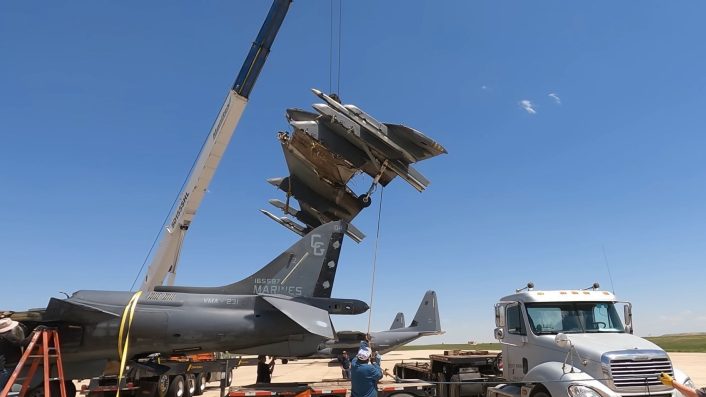
Marines then began the “demil” (demilitarization) process, which involved “taking off panels” and “going into stuff” inside the airframe. As the aircraft will no longer fly, critical and proprietary components that Boeing (which acquired McDonnell Douglas) and the Marine Corps would still prefer guarding are removed, as well as components that might still be useful.
A crew of at least 20 Marines were seen disembarking a USMC KC-130J Hercules together with equipment to support the work. Multiple panels and the SJU 4/A ejection seat are removed during the preparation, before being later reinstalled. In fact, a shot of the Harrier inside the museum’s hangars showed the ejection seat inside the cockpit, meaning the Marine crew removed its pyrotechnics and explosive charges and then reinstalled the seat.

CWO2 Vislosky said one of the primary items they remove during the demilitarization are all explosives, particularly the ones used to propel the ejection seat and to separate the canopy. Other hazardous material consists of batteries, hydraulic fluids, oil and fuel that can leak from the aircraft in a museum. “Then we remove the sensitive components from the aircraft, stuff that the government wants to retain,” Vislosky said.
The video showed a pipe and a coupling attached to a port outside the engine, possibly being used to remove the fluids. The classified systems mentioned could be vital mission systems, communications suites, navigation computers or the radar. Sgt. Fait Peele, an airframe mechanic with VMA-231, said they also “deservice” the aircraft struts, fully compressing them, and remove the “emergency blow down bottle.”
Vislosky summed up that the demil only concerns internal components, and “stuff underneath panels,” but the aircraft would look exactly like a regular Harrier from the outside while inside the museum. “You can see the engine, seat and the HUD [Head Up Display],” he added. After the wing removal and the journey to the museum, “the aircraft was lowered and the reassembly process began,” added Bailey in the narration.
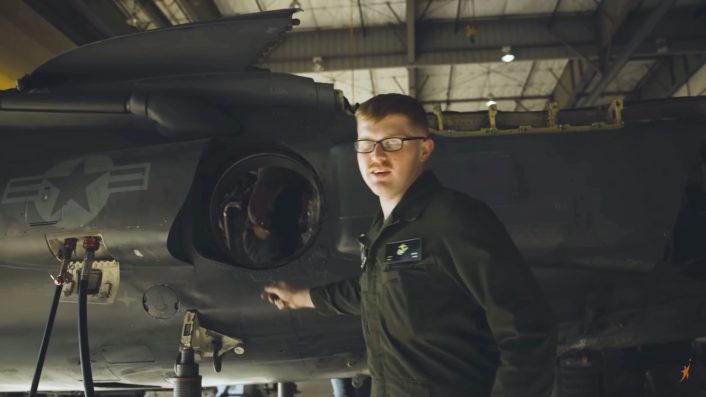
Marine Corps transitioning to F-35s
Falling within the 2nd MAW’s MAG-14 (Marine Aircraft Group 14), VMA-231 is slated to reactivate as the VMFA-231 (Marine Fighter Attack Squadron-231) to operate the F-35B Lightning II by 2026. As the Marine Corps’ oldest flying squadron, VMA-231 was first commissioned in 1919 and adopted the Harrier II in 1985. The unit served with distinction in several overseas operations like Operations Desert Shield, Desert Storm, Allied Force, Odyssey Dawn, Inherent Resolve, and, most recently, Prosperity Guardian.
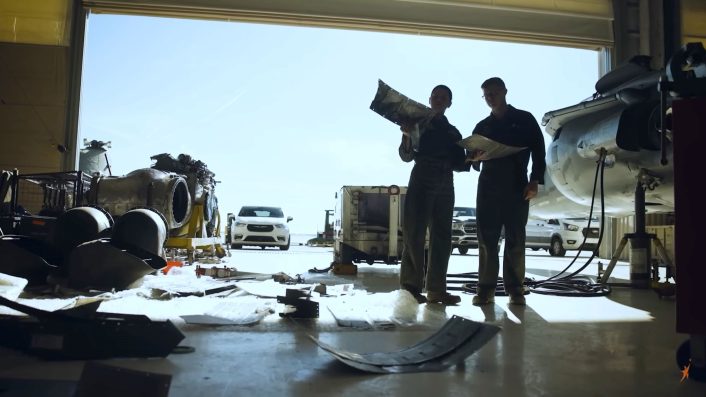
VMA-231’s commanding officer Lt. Col. Paul Truog called the May 29, 2025,, final flight a “momentous day” in the press release, adding that the 2nd MAW, the Marine Air Group and the squadron “are going to be more capable of responding to any crisis,” referring to the future arrival of the F-35B.
“But that capability is not just because it’s our most technically advanced weapons system,” Truog further said in his remarks. “That capability is because of the Marines and the pilots that, in record amounts, raise their hands saying, ‘I want to continue on, I want to keep moving forward.’”
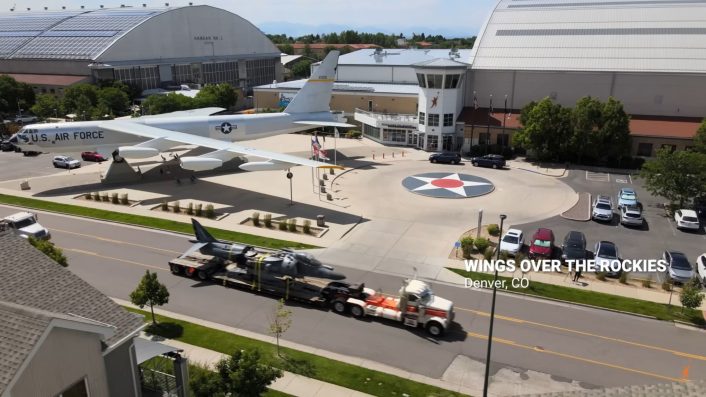
On Sep. 17, 2024, MCAS Cherry Point’s VMFA-251 “T-Bolts” (or Thunderbolts) received its first F-35C Lightning II, making the unit the East Coast’s first operational F-35C squadron. Also within the MAG-14, VMFA-251 marked the 2nd MAW’s transition from the legacy fixed-wing tactical aircraft to fifth generation stealth fighters. The unit’s previous aircraft was the F/A-18C/D Hornet, which it began flying in 1986.
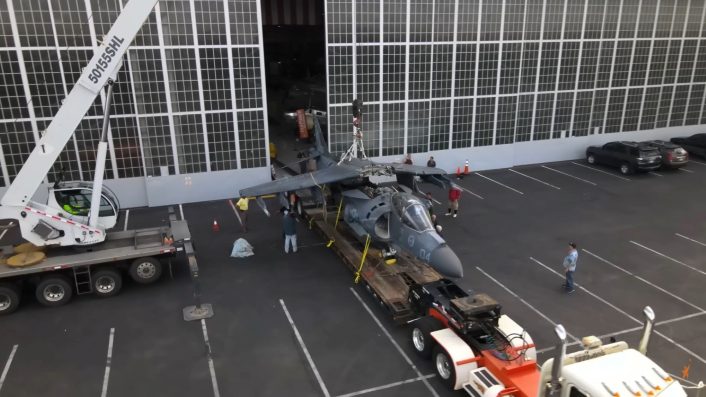
After VMA-231, the Corps’ other last remaining Harrier squadron mentioned earlier is VMA-223, “The Bulldogs”. On Jan. 4 2024, VMA-223, under the 2nd MAW’s MAG 14, received its final two pilots trained on the Harrier at MCAS Cherry Point, after completing flight training for the 7509 MOS (Military Occupational Specialty) at the FRD (Fleet Replacement Detachment).
An AV-8B Harrier II unit that declared an IOC (Initial Operating Capacity) with the F-35, in its case the ‘C variant, on Jul. 1, 2024 was the VMFA-311 “Tomcats” under the 3rd MAW within MAG-11. The unit was designated VFA-311 until being disbanded in 2020 while operating the legacy “jump jet.”
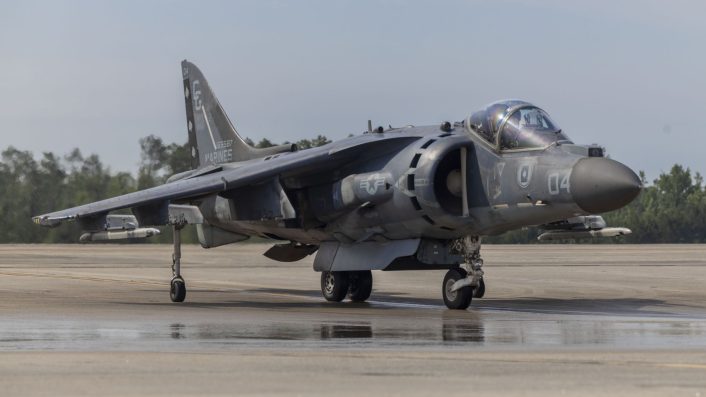
In 2022, the Corps’ Lightning II acquisition plans comprised 353 F-35B STOVL (Short Take-Off Vertical Landing) and 67 F-35C CATOBAR (Catapult Take-Off Barrier Recovery) jets, for a total of 420 aircraft to be received at a rate of roughly 20 per year. However, the MAP (Marine Aviation Plan) released in Feb. 2025, as per reports, reduced the F-35B’s number to 280 and raised the F-35C’s inventory to 140, while retaining the total fleet number to 420 airframes.

